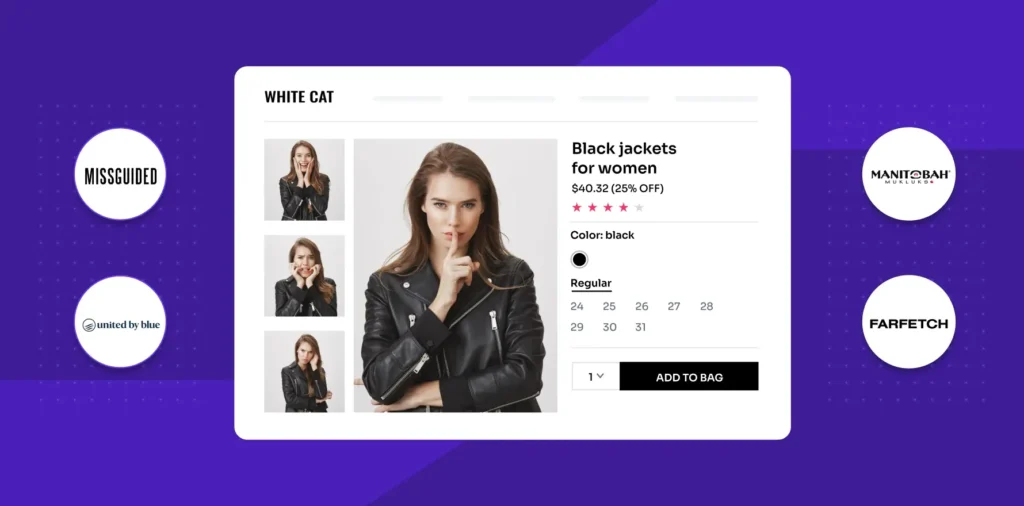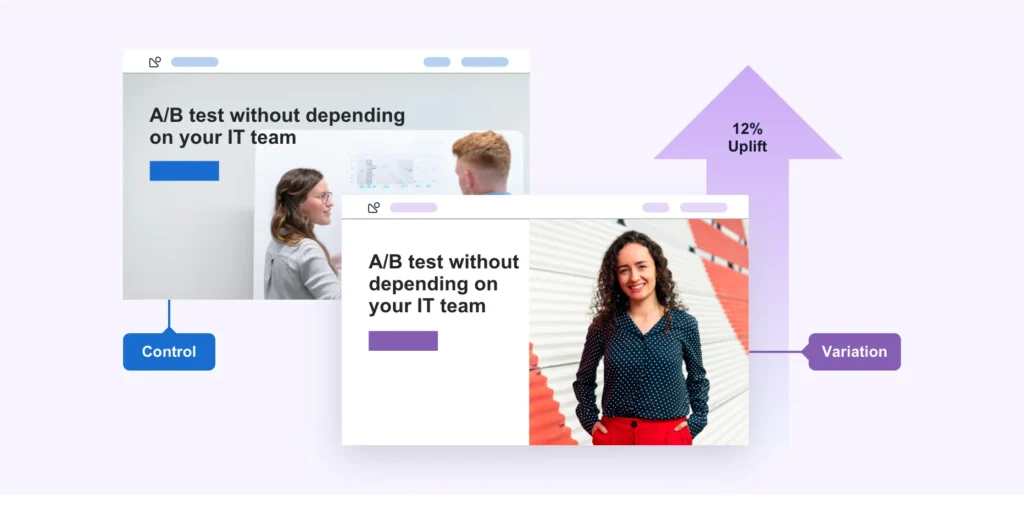The goal of a sales page is simple — to convert its visitors.
The most effective sales pages reach conversion rates of up to 27.4%, although an average conversion rate for the majority of the industries moves somewhere between 2 to 6%.
We’ll dig into the anatomy of high-converting product pages that can help you enhance your product page.
What Makes Product Pages Effective?
Attention-grabbing titles, captivating visuals, and persuasive descriptions – these are the cornerstones of a high-converting product page. Let’s dive into how each element should shine on your site:
1. Titles that Hook and Inform:
- Uniqueness is key: Stand out with titles that go beyond generic product names.
- Naming scheme harmony: Maintain consistency across your store for easy browsing.
- Keyword magic: Include relevant keywords potential customers might search for, like brand, size, colour, and key features.
- Luxy Hair inspiration: Take a cue from their clear, informative titles that entice clicks.
2. Media that Mesmerises:
- “Shop Now” visuals: Use eye-catching images that beckon customers from search engines and listings.
- The “Amazon Rule of Thumb”: Opt for high-quality photos on white backgrounds for professional polish.
- Show, don’t just tell: Showcase the product in action, model it, provide sizing guides, and even add videos for maximum impact.
- Master Dynamic mastery: Their headphone photos worn by real people exemplify this approach.
3. Descriptions that Drive Decisions:
Beyond product images, a great sales page should provide high-level information about the product. It’s the content that informs customers about the benefits and features of a product. It can convince them to buy from you.
88% of shoppers view detailed product content as being extremely important. An ecommerce sales page should provide details such as:
- A relevant product title
- Price
- Important features and components
- The material of the product
- Care and maintenance instructions
- Information about the brand
- Size / dimensions / capacity
Make sure that you use a polite, engaging, and personal touch in your product descriptions. Tell your customers why they should choose your product over others.
- Headline hook: Grab attention with the first line, highlighting the product and its main benefit.
- Explain the “why”: Go beyond features, delve into how the product solves problems or enhances lives.
- Feature firepower: Bullet points or concise sentences make key features easily digestible.
- Know your audience: Tailor details to address potential concerns and buying motivations.
- Poopourri’s perfect playbook: Their interactive “How It Works,” “What’s Inside,” and “Sizing Guide” sections are model examples.
4. Social Proof: Building Trust with Testimonials:
- Reviews reign supreme: 95% of people rely on reviews for research, so display them prominently.
- Video power: Text reviews are great, but video testimonials showcasing happy customers can be even more impactful.
- Incentivize and inspire: Encourage reviews through programs offering incentives like discounts or exclusive content.
- Rocky Mountain magic: Their integration of text reviews demonstrates this strategy effectively.
Integrating customer reviews and social proof elements can significantly influence a visitor’s decision-making process. Displaying genuine customer reviews, ratings, and testimonials builds trust and credibility.
5. Increase Trust with Customer Reviews and Ratings:
Product reviews and ratings build trust, and that trust increases conversions. They can clear any doubts that your prospects might have about a product and help them make a purchase decision.
Many shoppers prefer to seek advice from someone they know before they buy a product. However, 85% of consumers today trust online reviews as much as personal recommendations.
People often check what previous buyers have to say about a product. This helps them analyze if it’s the product that they’re looking for.
That’s why it is important to put social proof such as reviews and testimonials on your ecommerce product pages.
You should encourage your customers to review your products. One easy way to do so is to send them an email post-purchase to ask for a review.
Many customers don’t have a lot to say about your product. So you should make things easy for them. You can just ask them to leave a quick rating out of five. If they want to write more, allow them to send their feedback too. But it shouldn’t be compulsory to write.
Along with helping other users, customer reviews also help you understand what they like or don’t like about a product. This can be used as a huge opportunity to improve customer experience.
Some Finer Details To Consider
While compelling titles and descriptions are crucial, don’t underestimate the power of smaller details that can make your product pages shine. These touches show customers you care about their experience and can nudge them closer to that coveted “Add to Cart” button:
Transparency is key:
- Shipping clarity: Display estimated delivery times prominently, letting customers choose options that fit their needs.
- Availability awareness: Avoid frustrating dead ends by clearly indicating if a product is in stock.
- Payment peace of mind: List all accepted payment methods, including badges for major credit cards and PayPal, to build trust and convenience.
Luxyhair leads the way: Their flex payment options displayed right on the page are an excellent example of proactive transparency.
Seek inspiration from the best:
- Rocky Mountain Soap: Their product pages seamlessly integrate customer reviews and usage tips for a well-rounded experience.
- United By Blue: Their commitment to sustainability is woven into each product description, resonating with eco-conscious consumers.
- Master & Dynamic: Their focus on high-quality visuals and detailed specifications caters to discerning tech enthusiasts.
- Love Hair: Their playful tone and relatable product descriptions create a sense of connection with their audience.
- Kettle & Fire: Their emphasis on the story behind the product and its impact on customer lives fosters trust and brand loyalty.
Final Thoughts
High converting sales pages are places where all your hard work turns to fruition. It is the place where visitors click, people shop, and you drive revenue.
Begin by using the best practices and tips covered in this post. Implement them into your own company sales pages, as myself and my entire team have spent years trying to narrow down what truly works and converts.
And you will be well on your way to engaging and converting your visitors into customers.



